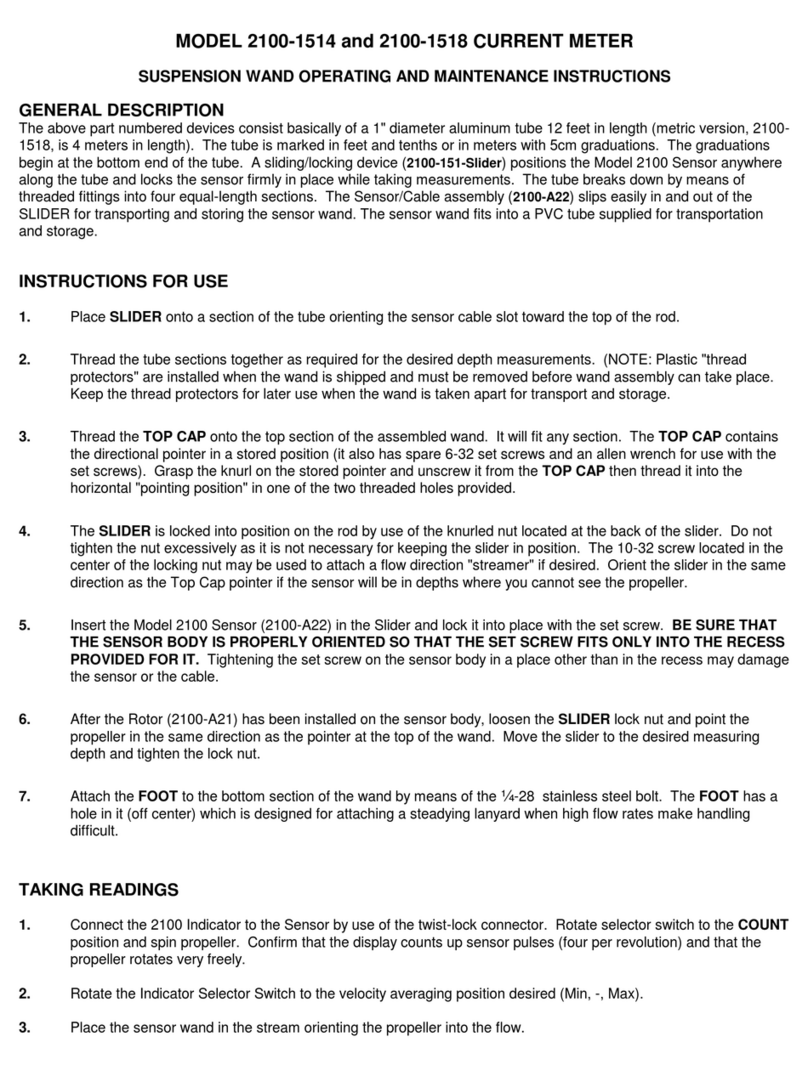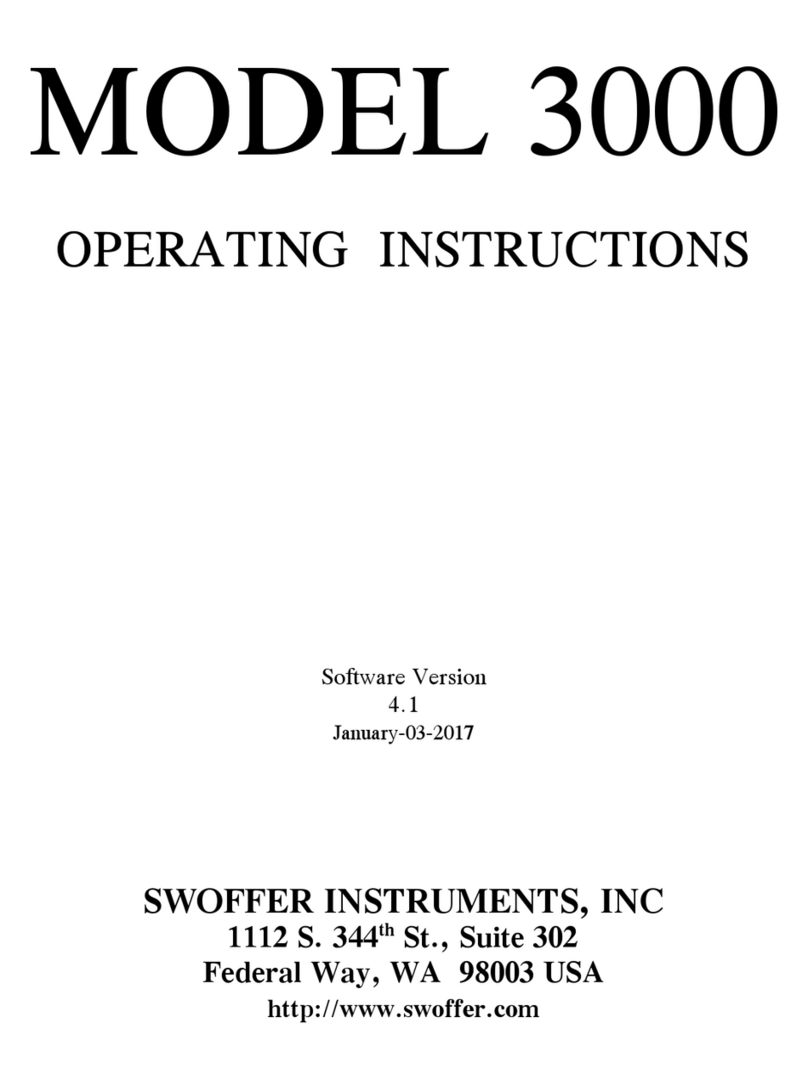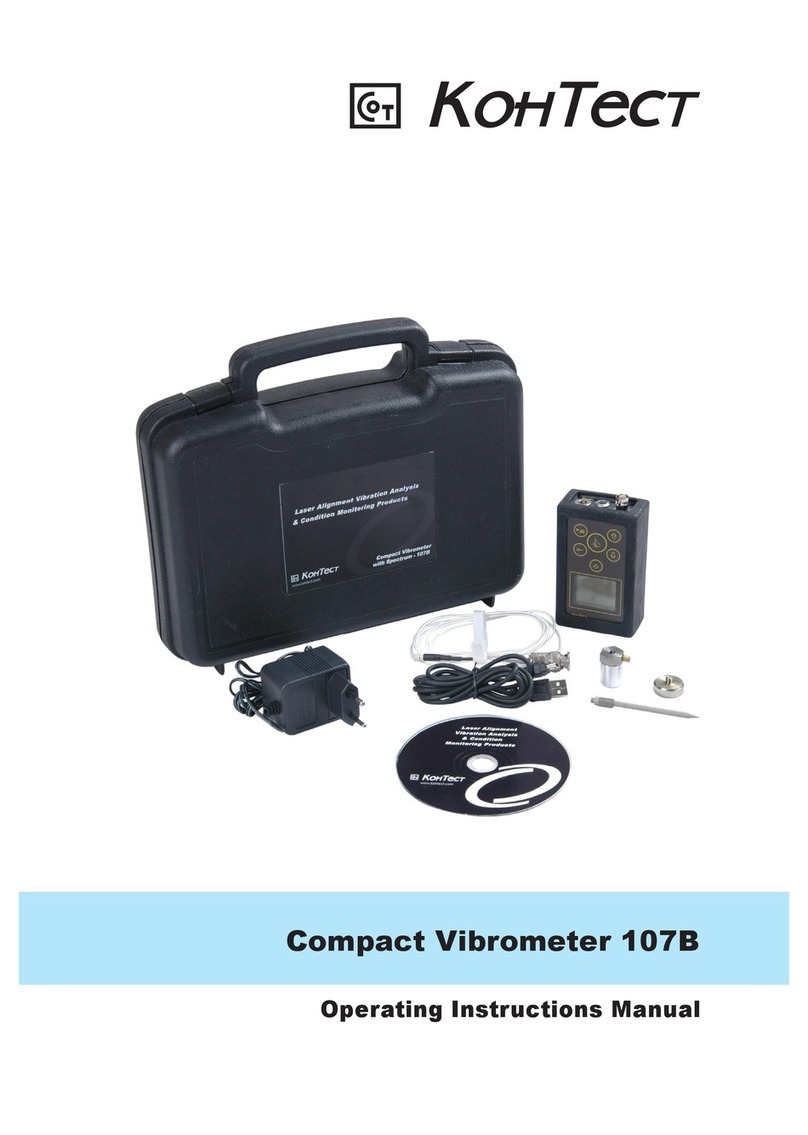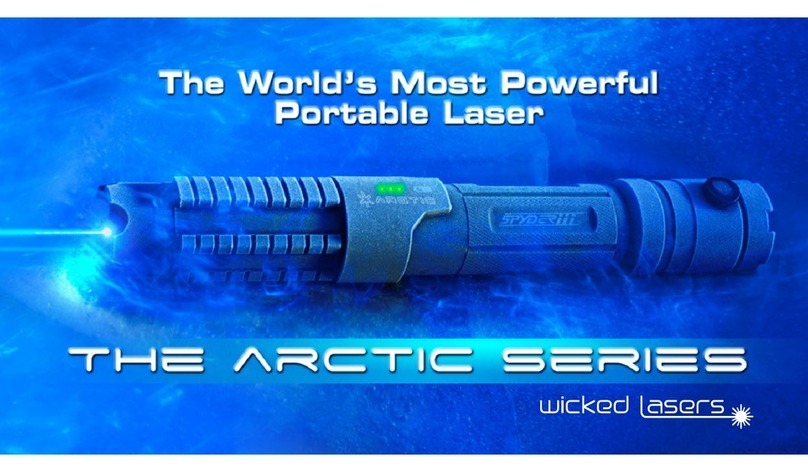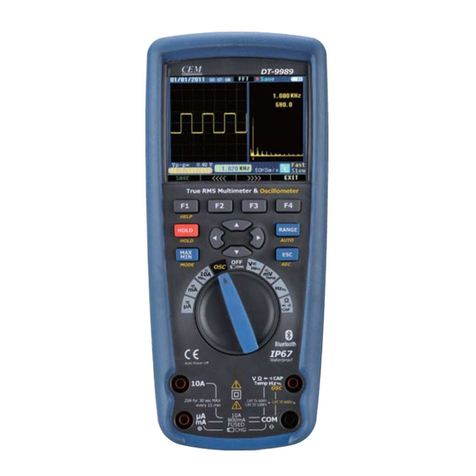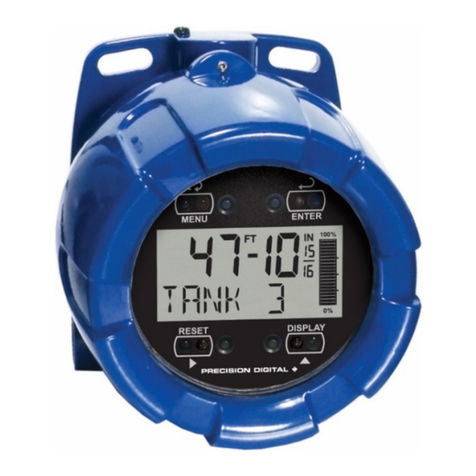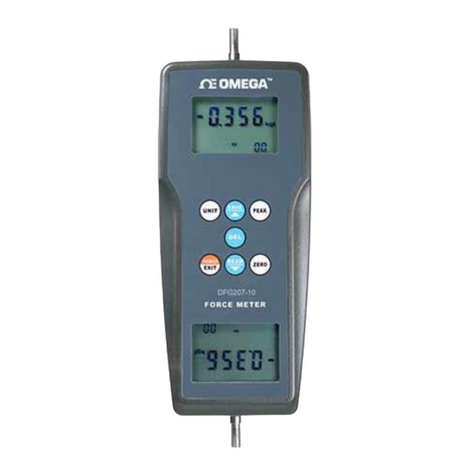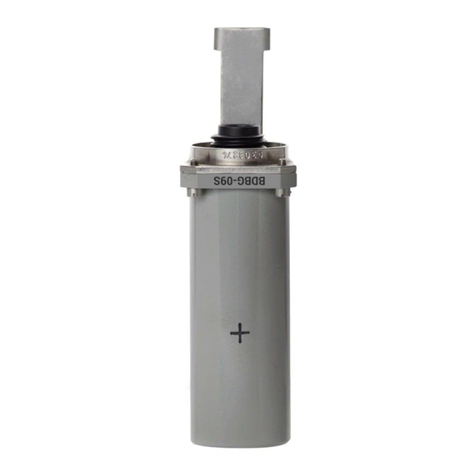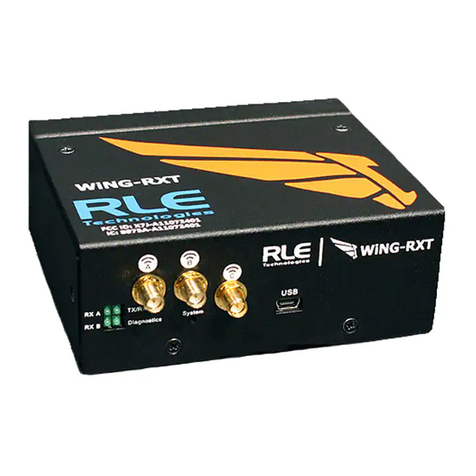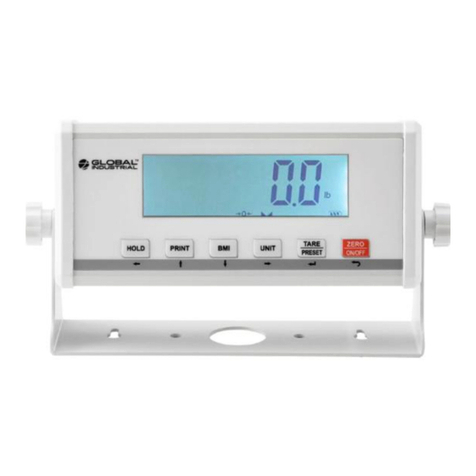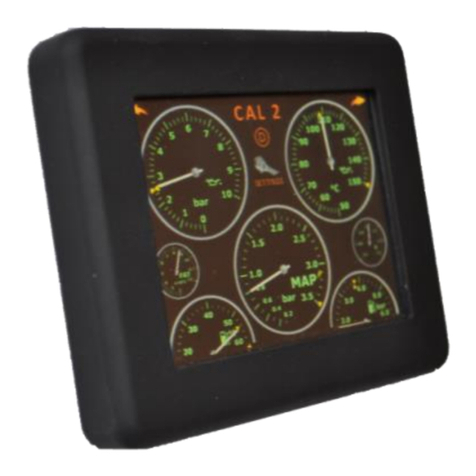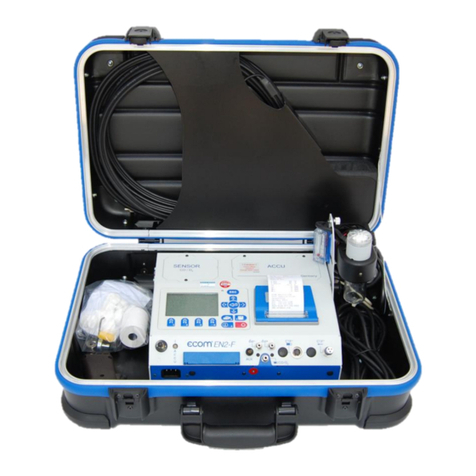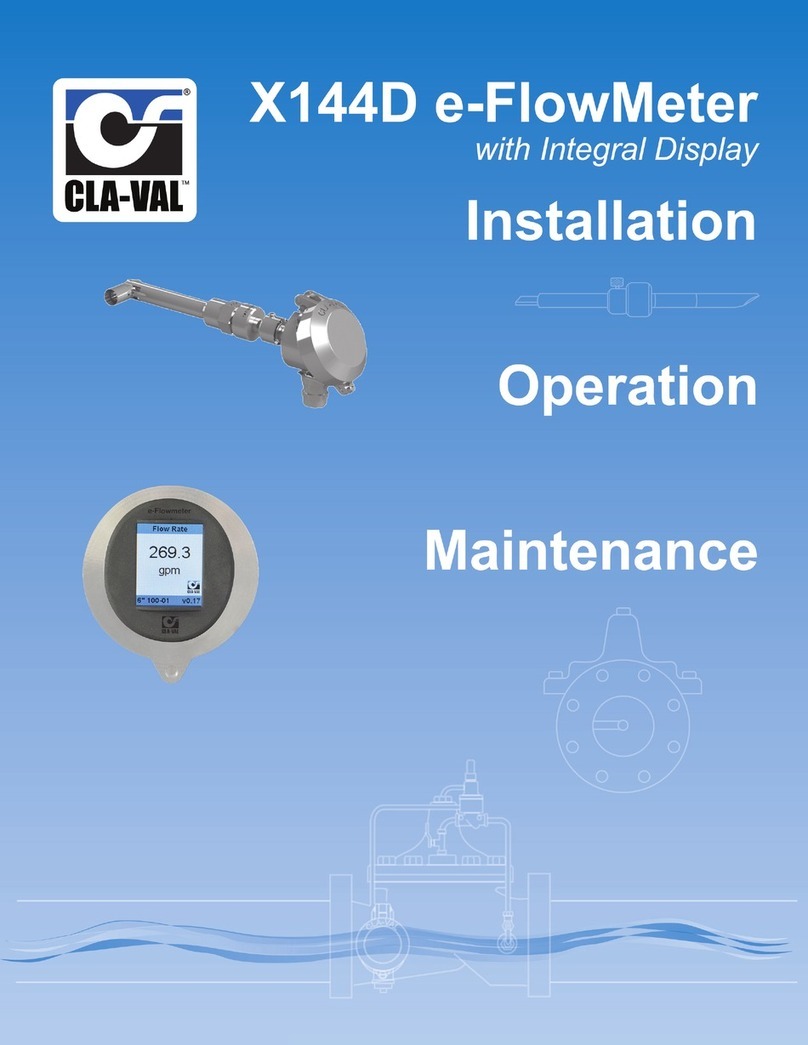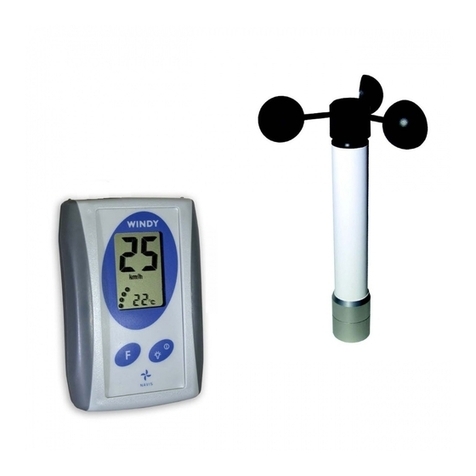Swoffer Instruments 2200-3000 User manual

MODEL 2200-3000 RETROFIT OPEN STREAM CURRENT METER / PAGE 1 of 7
Supplement to Model 3000 Instruction Manual
DESCRIPTION AND INSTRUCTIONS FOR INSTALLATION OF METER HARDWARE
Although titled both a "current meter and a flowmeter", the Model 2200-3000 is actually a retrofit sensing and
readout device that is designed to be used with existing Price Type AA and Pygmy current meters. These
meters, developed by the U.S. Geological Survey, have been in use for over ninety years yielding reasonably
accurate current velocity data by timed counting of "bucket wheel" revolutions. Meter construction is closely
controlled and "standard rating tables" of velocity as a function of revolutions and time are published by the
USGS. The original method of counting bucket wheel revolutions is by counting "clicks" generated in a
headset by the bucketwheel-driven contactor. The interval over which the clicks are counted is determined by
use of a stop watch. The stream velocity is then taken from the rating tables provided by the manufacturers
and the USGS. Users not familiar with the Price Meters are referred to the WATER MEASUREMENT
MANUAL and other publications prepared by the USGS.
Price Type Meters have been mechanically reliable for many years; however accuracy has been a function of
careful maintenance and adjustment of the delicate "cats-whisker" contactors and proper lubrication of bearings
and penta gears. Even with regular maintenance and the proper adjustments and operating procedures the Price
Meters are not considered accurate below 0.2 feet per second. The inherent levels of friction caused by the
cats-whisker contactors and the worm gears (AA Meter) inhibit bucket wheel turning at these velocities.
The optic sensor for the Model 2200-3000 is designed to eliminate as much friction as possible. The output
signal of the sensor is produced by a non-contacting PHOTO-FIBER-OPTIC device that completely replaces
the contact chamber assembly (AA Meter) and the cats-whisker contactor (Pygmy meter). Rotational friction
is brought to minimum and accurate readings down to and below 0.1 foot per second are attainable under ideal
conditions.
Once the sensor adapter parts are installed on the AA and Pygmy meters the 2200-A, photo-optic sensor can
easily be placed on either meter as desired. The 3000 Indicator will then provide stream velocity readings and
flow rates in any of several modes. This manual describes the installation of the optical retrofit sensor and
adapters to AA and Pygmy type meters.
Fig. 1

MODEL 2200-3000 RETROFIT OPEN STREAM CURRENT METER / PAGE
2
OF 7
Supplement to Model 3000 Instruction Manual
MODEL 2200-3000 PARTS LIST
PART NUMBER DESCRIPTION QUANTITY
2200-A Sensor-cable assembly, 10' 1
3000 Indicator Digital readout indicator 1
2200-A1 Sensor adapter, Pygmy meter 1
2200-A2 Sensor adapter, AA meter 1
2200-A4 Replacement Rotor Shaft, AA meter 1
2200-A5 Replacement Rotor Shaft, Pygmy meter 1
2200-011 "O" Ring seals, (2 spares also provided) 4
2200-A14 Fiber-Optic Carrier Rotors 2
2200-A16 Adapter protection Caps 2
.05" Allen wrench Used as Rotor Installation Wrench 1
10-32 X ¼" Screw Replaces cat-whisker contactor PYGMY meter only 1
NECK STRAP Snap swivel for attachment to Indicator back 1
CHEST-WAIST HARNESS For hands free use of the 3000 Indicator 1
AA BATTERIES One set (4) required for operation plus a spare set 2
CD-ROM IBM PC compatible only, file transfer software, etc. 1
USB cable Interface cable for pc USB port-to-M3000 meter 1
INSTRUCTIONS FOR OPERATION AND MAINTENANCE 1 Set
SENSOR ADAPTER INSTALLATIONS (refer to drawings in back)
AA METER
1. Remove contact chamber assembly entirely.
2. Remove pivot shaft from yoke at lower end of the
bucket wheel.
3. Unscrew and remove upper rotor shaft from the
bucketwheel and replace it with part 2200-A4.
Carefully mate the threads of the new shaft to the
bucketwheel threads and tighten shaft ONLY with the
.05" Allen wrench inserted in the wrench hole in the
shaft (to prevent damage to the bearing surfaces).
4. Install Sensor Adapter (2200-A2) through the top of
the yoke, carefully inserting the upper portion of the
new rotor shaft through the hole in the bottom of the
adapter. When seated, the AA adapter should be
locked in place by tightening the front yoke screw.
See AA Meter Retrofit Problems ahead for fit detail
and possible problems with installation of this
component.
5. Re-install the lower (pivot) shaft and adjust vertical
position of bucketwheel as necessary.
6. Using the brass blade driver supplied install the Fiber-Optic Carrier Rotor (2200-A14) through the top
of the Adapter and onto the threads of the new rotor shaft. DO NOT TIGHTEN TOO TIGHT TO
AVOID STRIPPING THREADS. The top of the Fiber-Optic Rotor must not be above the shoulder
inside the Adapter. See step 4.

MODEL 2200-3000 RETROFIT OPEN STREAM CURRENT METER / PAGE 3 of 7
Supplement to Model 3000 Instruction Manual
7. Conduct the standard AA meter spin test as defined by the USGS instructions. When properly
installed and adjusted, the AA meter conversion should provide at least a slight increase in the normal
spinning time.
8. Install the "O" Ring (2200-011) in the top of the 2200-A2 Adapter.
9. Place the Sensor (2200-A) on the adapter and tighten the sensor mounting nut (2200-A3) finger tight
only. The sensor should not rotate when mounting nut is tightened. If it does tighten the front yoke
screw a bit more (see step 4 above) and check that the "O" ring is properly seated.
10. Give the meter a second spin test to make sure all installations are correct and that operation is
satisfactory.
PYGMY METER
1. Remove contact chamber cap, binding post nut and binding post body, leaving only the nylon bushing
in place in the yoke. Install the furnished 10-32 x 1/4" screw tightly in the bushing.
2. Remove the bucketwheel pivot shaft.
3. Unscrew the upper rotor shaft from the bucketwheel and replace it with the new one (2200-A5).
Tighten the new shaft only by using the wrench (.05" allen wrench) inserted in the hole in the rotor
shaft to avoid damage to the bearing surface.
4. Remove Upper Bearing (bronze part) from the yoke. This part is not necessary and will prevent
proper installation of the adapter if not removed.
5. Install the Pygmy meter Adapter (2200-A1) by threading it into the upper yoke arm (formerly the
contact chamber cap threads). Carefully insert the top of the new bucketwheel shaft through the hole
in the adapter bottom while you thread. Tighten the adapter onto the yoke by use of the allen wrench
horizontally through the holes in the upper threads of the adapter. Make sure the adapter is tight to the
yoke otherwise removal of the sensor nut may unscrew the adapter if the threads are a bit snug.
6. Re-install the lower pivot shaft adjusting it vertically as necessary; centering the bucketwheel in the
yoke as much as possible.
7. Using the brass blade driver supplied install the Fiber-Optic Carrier Rotor (2200-A14) through the top
of the Adapter and onto the threads of the new rotor shaft. DO NOT TIGHTEN TOO TIGHT TO
AVOID STRIPPING THREADS. The top of the Fiber-Optic Rotor must not be above the
shoulder inside the Adapter.
8. Conduct a spin test. When properly installed and adjusted, the spinning time should be at least as long
as that previously achieved before conversion. Note the rotation of the fiber-optic rotor. It should be in
the center of the adapter and must never come in contact with the sides of the adapter. See Pygmy
Meter Retrofit Problems, ahead, and refer to the notes for corrections if contact is being made. Do not
operate the meter if fiber-optics rotor makes contact with the adapter!
9. Install the "O" Ring (2200-011) in the top of the Adapter and place the Sensor on the Adapter and
tighten the Sensor Retaining Nut (2200-A3) on the yoke finger tight only. Do not operate the sensor
without an “O” ring as it helps keep the optics from contacting the rotor should tolerances be wrong.
10. Conduct a second spin test to confirm all installations and adjustments are satisfactory.
NOTE: Keep the adapter protectors (2200-A16) on the meters when the instrument is not in
use. These protect the adapter threads, prevent loss of the "O" rings and keep dirt out of the
sensor.
CARE AND MAINTENANCE OF THE MODEL 2200-3000 SENSOR
1. The proper operation of the Model 2200 Sensor depends on the transmission of an infrared light beam
generated by the light-emitting diode in the Sensor through 180° loops of rotating fiber-optic bundles

MODEL 2200-3000 RETROFIT OPEN STREAM CURRENT METER / PAGE
4
OF 7
Supplement to Model 3000 Instruction Manual
to the photo-sensitive transistor. If the fiber-optics or the LED and transistor are allowed to get too
dirty, light transmission will be impeded. Periodically check the fiber optic rotor (2200-A14) and
wash the ends of the optics in clear water. Soap and water may be used if surfaces are very dirty. Do
the same for the LED and Photo-Transistor in the Sensor body. CAUTION: Do not scratch the
surfaces of the LED and Photo-Transistor.
2. Regularly clean out and re-lubricate (use same type oil as originally supplied with your meters) the
inside of the sensor adapter chamber where the rotor turns and also check for bearing wear between the
chamber and the upper rotor shaft. If side to side play is excessive rotate the Adapter ¼ turn and
check side play again. Replace the Adapters (2200-A1, Pygmy & 2200-A2, AA) if play is excessive
or vibrations occur which cannot be corrected by adjustments or lubrication.
APPLYING CALIBRATION CORRECTIONS TO THE MODEL 2200-3000
The default Calibration Numbers (Props 4 and 5) for the Model 2200-3000 are for the "Velocity" reading and
"Disch Modes" only and are for USGS Price Meters which are "standard rated" (Prop 4 is the AA meter and
Prop 5 is the Pygmy meter). Damage to the bucketwheel cups, maladjustments and excessive bearing wear
will influence this rating as will meters not produced to U.S. Geological Survey specifications.
It is possible, using the Model 2200-3000, to change the calibration and compensate for some types of damage
to a Price Type meter and still obtain accurate velocity data. It must be recognized however, that any damage
to a meter other than minimal bucketwheel cup damage (bent or dented slightly) should NOT BE
COMPENSATED FOR. The meter itself should be reconditioned with new parts and re-rated in the normal
manner before use with the Model 3000 Indicator.
See the Model 3000 Indicator operating instructions for further information on calibration and calibration
corrections.
AA METER RETROFIT PROBLEMS
1. In some AA Yokes it has been found that a deep chamfer has been made in the hole through the top of
the Yoke. The chamfer has no effect on the original Catwhisker contactor's fit but it can seriously
effect the positioning of the Swoffer adapter. If the chamfer is deep enough it can allow the
2200-A2 adapter to drop too low around the 2200-A4 shaft and cause clearance problems between the
Adapter, the Shaft, the Fiber-Optics Rotor (2200-A14), and the Sensor (2200-A). The threaded
portion of the adapter must not drop below the top level of the AA yoke.
2. Swoffer has produced special tapered washers for some customers with incorrectly machined yokes but
it is impossible to predict in advance the amount of any yoke's chamfer since a chamfer is not called
out on USGS drawings. The chamfer is entirely at the discretion of the machinist.
If you do have an excessive chamfer in your Yoke you can hold the Adapter in the correct position (the
bottom of the threaded section of the Adapter exactly even with the top flat surface of the AA Yoke)
while tightening the set screw on the front of the Yoke. If the set screw is kept snug then operation
without a shimming washer can be very satisfactory.
PYGMY METER RETROFIT PROBLEMS
In some Pygmy (mini) meters the holes through the upper and lower yokes are not concentric. This
condition does not effect the original catwhisker operation so these meters may have been in the field
for years operating without problems. But a non-concentric condition will seriously affect the fit and
function of the Fiber-Optic rotor when installation is attempted on an out-of-tolerance Pygmy yoke.
While installing, if the fiber-optics rotor contacts the inside of the Adapter anywhere during rotation
then immediately and carefully remove the kit parts entirely. The Pygmy yoke must then be adjusted
or replaced before re-installation of the fiber optic sensor adapter kit is attempted. Call Swoffer
Instruments, Inc for help in this regard. (206) 575-0160.

MODEL 2200-3000 RETROFIT OPEN STREAM CURRENT METER / PAGE 5 of 7
Supplement to Model 3000 Instruction Manual
QUICK OPERATING INSTRUCTIONS FOR THE MODEL 2200-3000
1. Connect 2200 Sensor cable to the Model 3000 Indicator by use of the twist-lock connector.
2. Attach the Sensor to a meter using the knurled slip ring. Check that the bucket wheel rotates freely
and that the fiber-optics rotor does not contact the sensor or the adapter.
4. Choose the Prop (calibration number appropriate for the sensor-meter combination you have connected
to the Indicator). Normally it will be Prop 4 or 5. (4=AA, optic, 5=Pygmy,optic).
5. Place the Indicator in the Count mode and spin the meter to be sure that the sensor is producing pulses.
With the normal "two hole" fiber-optic rotor you should get two pulses per meter revolution. If
confirmed then:
6. Choose the operation desired by use of the key pad. (Count Revolutions, Velocity, or Discharge
Mode).
7. Place the meter in the stream and begin taking readings.
NOTE: A separate section of the instructions refers to the Model 3000 Indicator. In most cases references to
the 2200 portion of the instrument is either not necessary or is implied since the Model 3000 instrument was
designed to operate with many different kinds of sensors including the "2200" version for Price Type meters
with optic sensors.
SWOFFER INSTRUMENTS, INC.
1112 S. 344th St., Suite 302
Federal Way, WA 98003 U.S.A.
http://www.swoffer.com
Tel. (253) 661-8706

MODEL 2200-3000 RETROFIT OPEN STREAM CURRENT METER / PAGE
6
OF 7
Supplement to Model 3000 Instruction Manual
2200-A, Sensor
A3, RETAINING NUT
- 011 O-RING
A14, FIBER OPTICS
CARRIER ASSEMBLY
A2, YOKE ADAPTER
.250 10-32 R.H.M. SCREW
A4, SHAFT
YOKE
3/32" (.05") allen wrench, use
as installation wrench for 2200-A4
AA Meter Optical Retrofit

MODEL 2200-3000 RETROFIT OPEN STREAM CURRENT METER / PAGE 7 of 7
Supplement to Model 3000 Instruction Manual
2200-A, Sensor/Cable assembly
A3, RETAINING NUT
- 011 O-RING
A14, FIBER OPTICS
CARRIER ASSEMBLY
A1, YOKE ADAPTER, PYGMY
A5, SHAFT
10-32 x 1/4" screw
3/32" (.05") Allen Wrench
Used as installation wrench
for 2200-A5, shaft
Pygmy Meter Optical Retrofit
Table of contents
Other Swoffer Instruments Measuring Instrument manuals
